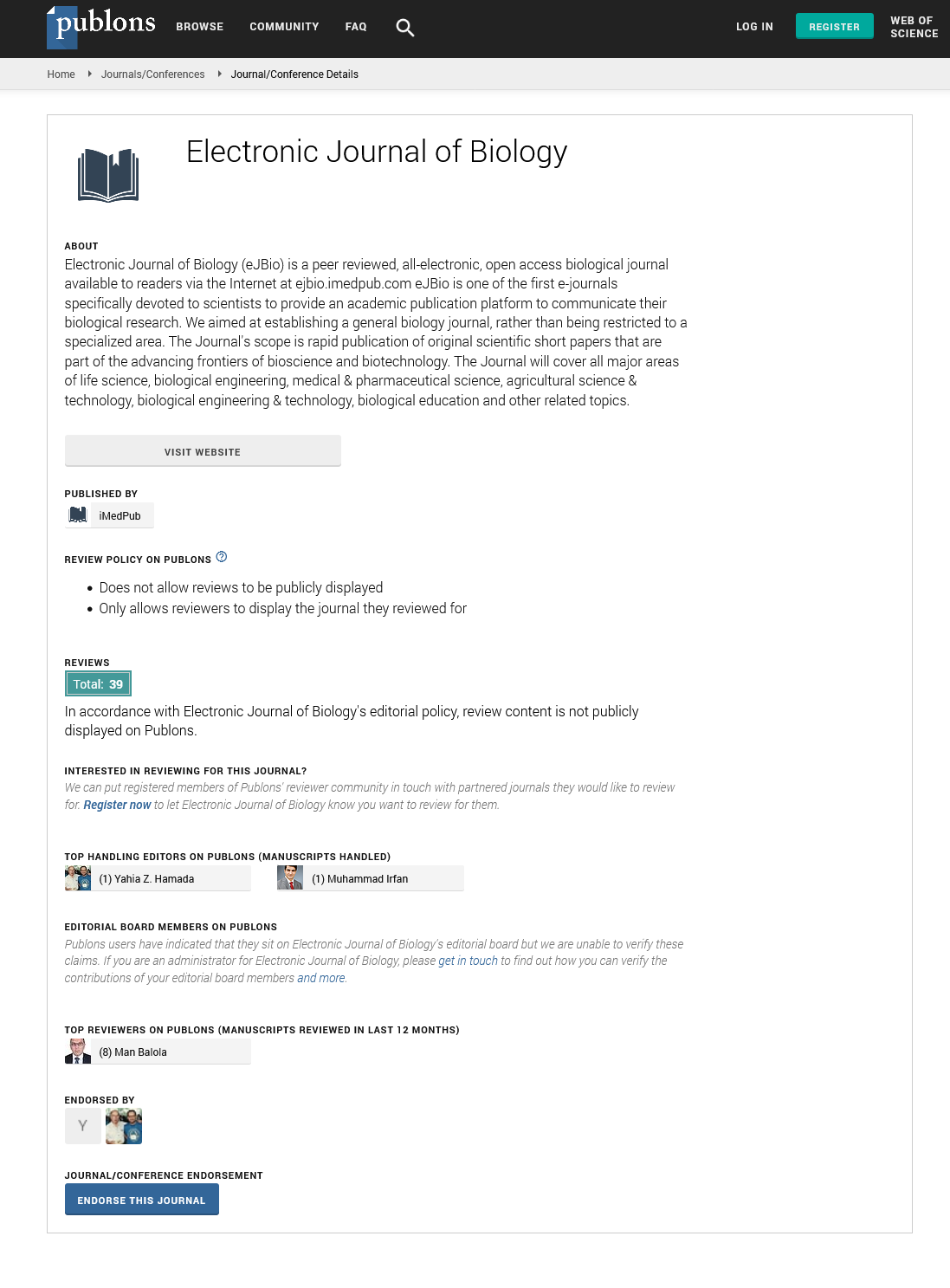Abstract
PCR Restriction Fragment Length Polymorphism Analyses of V. Parahaemolyticus MAM-7 Virulence Gene in Clinical andEnvironmental Strains
Virulent and non-virulent Vibrio parahaemolyticus (V. parahaemolyticus) strains coexist together in seawater. A PCR–restriction fragment length polymorphism (PCR-RFLP) technique could differentiate between clinical (virulent) and environmental V. parahaemolyticus strains. MAM- 7 corresponds to a virulence gene described in V. parahaemolyticus and that participates in initial stages of pathogen gut colonization. The objective of our study is to evaluate if PCR-RFLP analyses of MAM-7 gene can discriminate between clinical and environmental V. parahaemolyticus strains. Ten V. parahaemolyticus clinical isolates and nine V. parahaemolyticus environmental isolates were used to obtain genomic DNA. A 2619 bp PCR product from MAM-7 gene was digested with HindIII and AcuI restriction enzymes revealing a characteristic common pattern in 100% of V. parahaemolyticus clinical isolates. These patterns were absolutely different of those obtained from environmental isolates. PCR of toxin related genes (tdh and trh) showed that only clinical isolates were tdh+. As a conclusion, PCR-RFLP of V. parahaemolyticus MAM-7 gene could discriminate between clinical tdh+ isolates and environmental ones and could complement other diagnostic tools to detect and classify virulent strains. However, it is still necessary to analyze more samples of V. parahaemolyticus. Thus, while these results are promising, this study corresponds to preliminary work.
https://maviyolculuk.online/
https://mavitur.online/
https://marmaristeknekirala.com.tr
https://tekneturumarmaris.com.tr
https://bodrumteknekirala.com.tr
https://gocekteknekirala.com.tr
https://fethiyeteknekirala.com.tr
Author(s): Ana Elola-Lopez, Maria Jose Esquivel, Cristian A Munoz-Bergmann, Sebastian Beltran, Carlos G. Osorio, Annette N. Trombert
Abstract | Full-Text | PDF
Share this

Google scholar citation report
Citations : 5001
Electronic Journal of Biology received 5001 citations as per google scholar report
Electronic Journal of Biology peer review process verified at publons
Abstracted/Indexed in
- Google Scholar
- China National Knowledge Infrastructure (CNKI)
- CiteFactor
- Electronic Journals Library
- Zoological Records
- WorldCat
- Proquest Summons
- Publons
- MIAR
- Openaccessarticles.com
- Secret Search Engine Labs
Open Access Journals
- Aquaculture & Veterinary Science
- Chemistry & Chemical Sciences
- Clinical Sciences
- Engineering
- General Science
- Genetics & Molecular Biology
- Health Care & Nursing
- Immunology & Microbiology
- Materials Science
- Mathematics & Physics
- Medical Sciences
- Neurology & Psychiatry
- Oncology & Cancer Science
- Pharmaceutical Sciences


